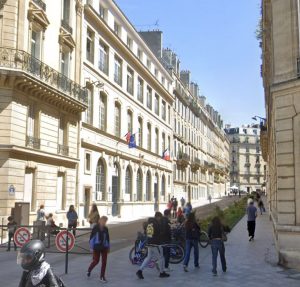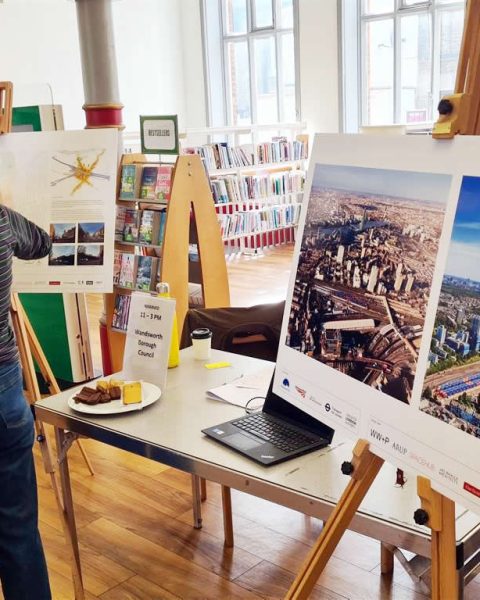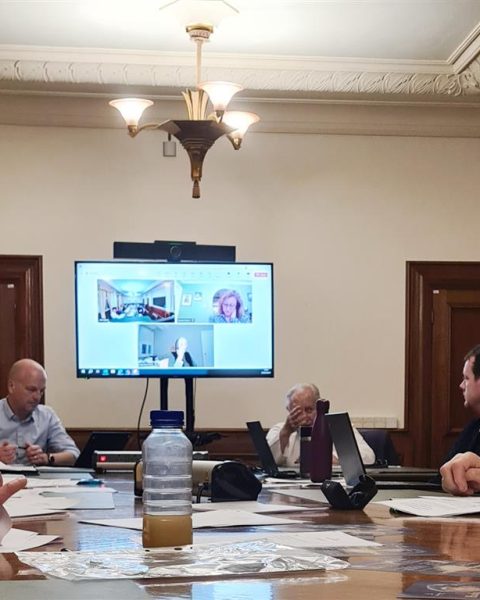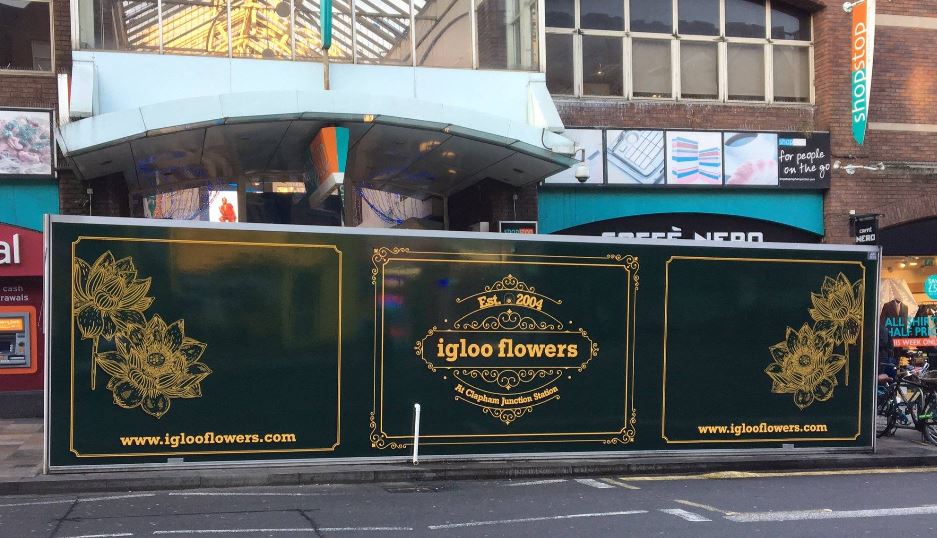In our previous article, we compared London with other major European cities known for their bike-friendly policies or substantial efforts. We also gave examples of good infrastructure that could be implemented and discuss the responsibilities of different stakeholders: the central government, the Mayor of London, and local boroughs.
In this article, we will discuss again bike sharing, Cycle Superhighways, Quietways routes, but we will also focus more specifically on Wandsworth.
London has made efforts in the past 15 years to encourage cycling. In 2007, a feasibility study was commissioned to implement a bike-sharing system, which officially started in 2010.
In 2010, the first bike-sharing system was officially launched in London during the first term of the new Mayor, Boris Johnson. Although the scheme, sponsored by Barclays, was quickly dubbed “Boris’ bikes” by Londoners, it was actually conceived by his predecessor, Ken Livingstone, who was inspired by a similar system in Paris.
Dockless rental bikes clogging up pavements
However, those private e-bike schemes have been a source of concern for many boroughs, as they have often been accused of littering the pavements. Westminster took action last year to address the problems caused by e-scooters clogging up the borough’s pavements and creating hazards for pedestrians. In a crackdown operation, the local authority decided to confiscate all the abandoned rental e-scooters that were littering the pavements and creating trip hazards. In September 2023, they also announced their plans to create 220 e-bike and e-scooter parking bays.
In a press release published on Friday 23 September, Wandsworth was following Westminster’s example and announced that they will also provide bays in an attempt to stop dockless hire bikes blocking pavements.
Jenny Yates, Wandsworth’s Cabinet Member for Transport said:
“Our scheme will seek to remove these pavement obstructions by working in partnership with the bike hire companies to ensure their bikes are parked in mandatory bays in town centres and busy areas, meeting the needs of riders whilst not disadvantaging others, particularly pedestrians.”
The council has already identified more than 100 locations where hire bikes could be parked without causing obstruction. The use of these spaces will now be the subject of local consultation.
Wandsworth among the worst London boroughs for Cycling infrastructure
As explained in our previous article, the responsibility for managing London’s road network is shared between Transport for London (TfL), Highways England (for motorways), and the 32 London boroughs, plus the City of London. TfL manages London’s ‘red routes’ (the main roads) and each individual London borough is responsible for all the remaining roads within its boundaries.
There are 39 red routes in Wandsworth making 5 big axes.
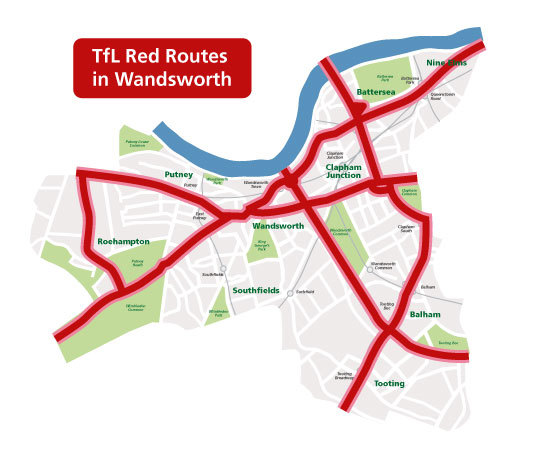
Wandsworth seems to compete amongst the worse boroughs in term of cyclist infrastructure. Not only are their cycle superhighways narrow and unsafe, but they have also not been maintained and are often reduced to a few patches of blue paint in the Clapham Junction area.
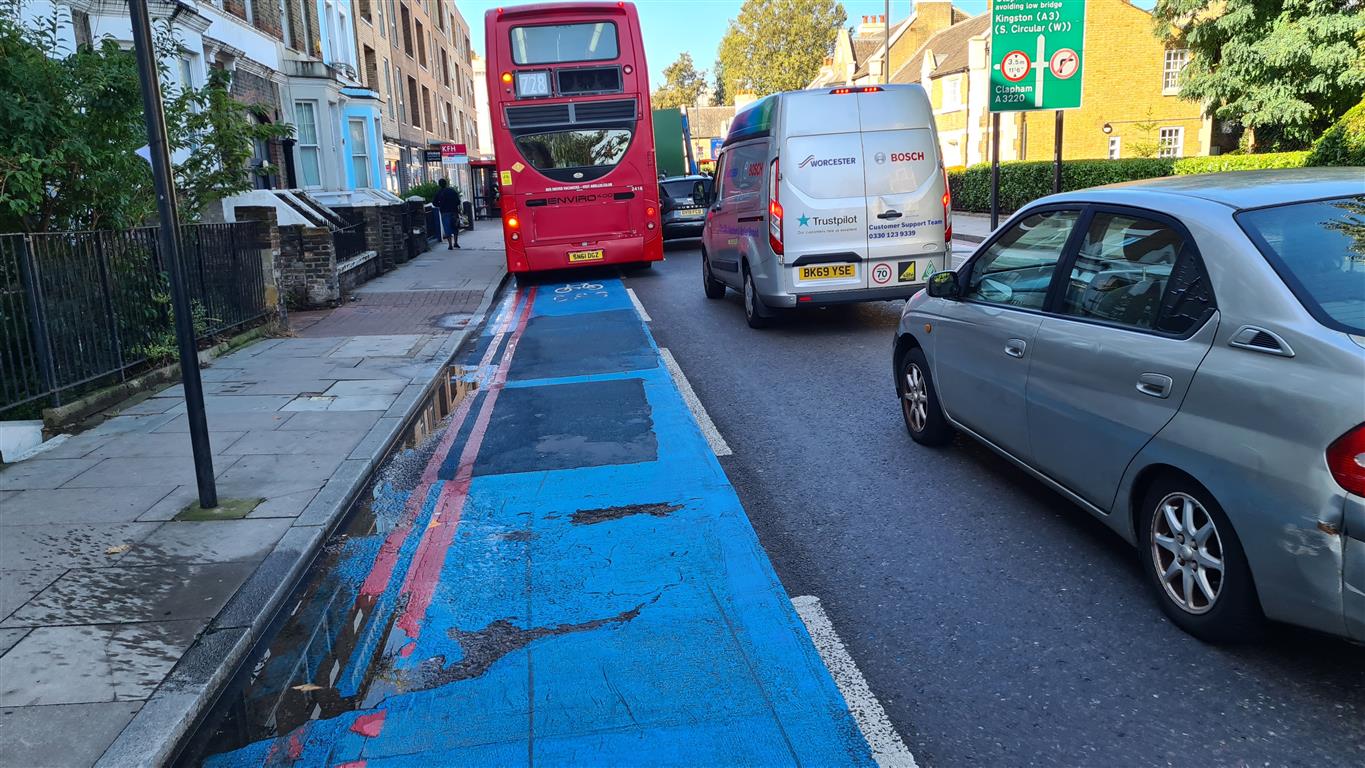
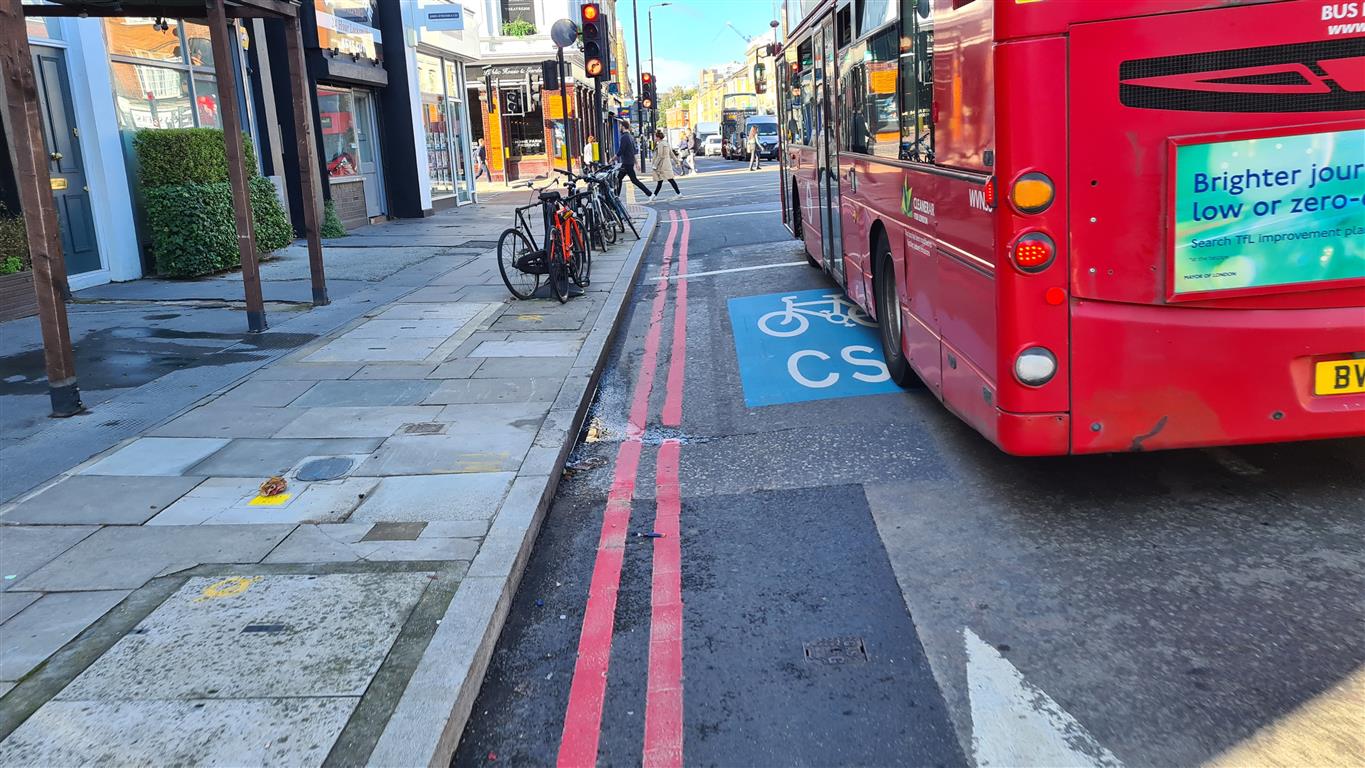
The CS7 going from Tooting and Balham to Lambeth and Southwark gets a lot of complaint, especially on its Wandsworth part:
Could we have some kerbs on CS7 please @willnorman? The wands are helpful but aren't very good at deflecting HGVs.
(CC @JoRigby_Balham) pic.twitter.com/jcMENIqdCe— Bill Hulley (@billhulley) November 13, 2022
With regard to CS8, it is clear that on some portions, it would be possible to reduce the pavement to accommodate a segregated cycle lane that also takes up part of the road. However, to minimize spending, the choice has been to continue painting the roads instead of building proper infrastructure.
Paint is not safe cycling infrastructure! From Friday's bike commute home heading towards Wandsworth Roundabout in @wandbc on @TfL CS8. pic.twitter.com/AH14h6xmrq
— Fiona MacCallum 💙💚🐰 (@MissFiMac) October 10, 2022
We’ve seen some improvements on a (very small) section along York Road in 2021 with new paint and…25 wands, but it seems to be more due to developers providing money rather than a comprehensive policy and after that small part, the cycle way is going… in the middle of the traffic, with motor vehicles using it to change lane.
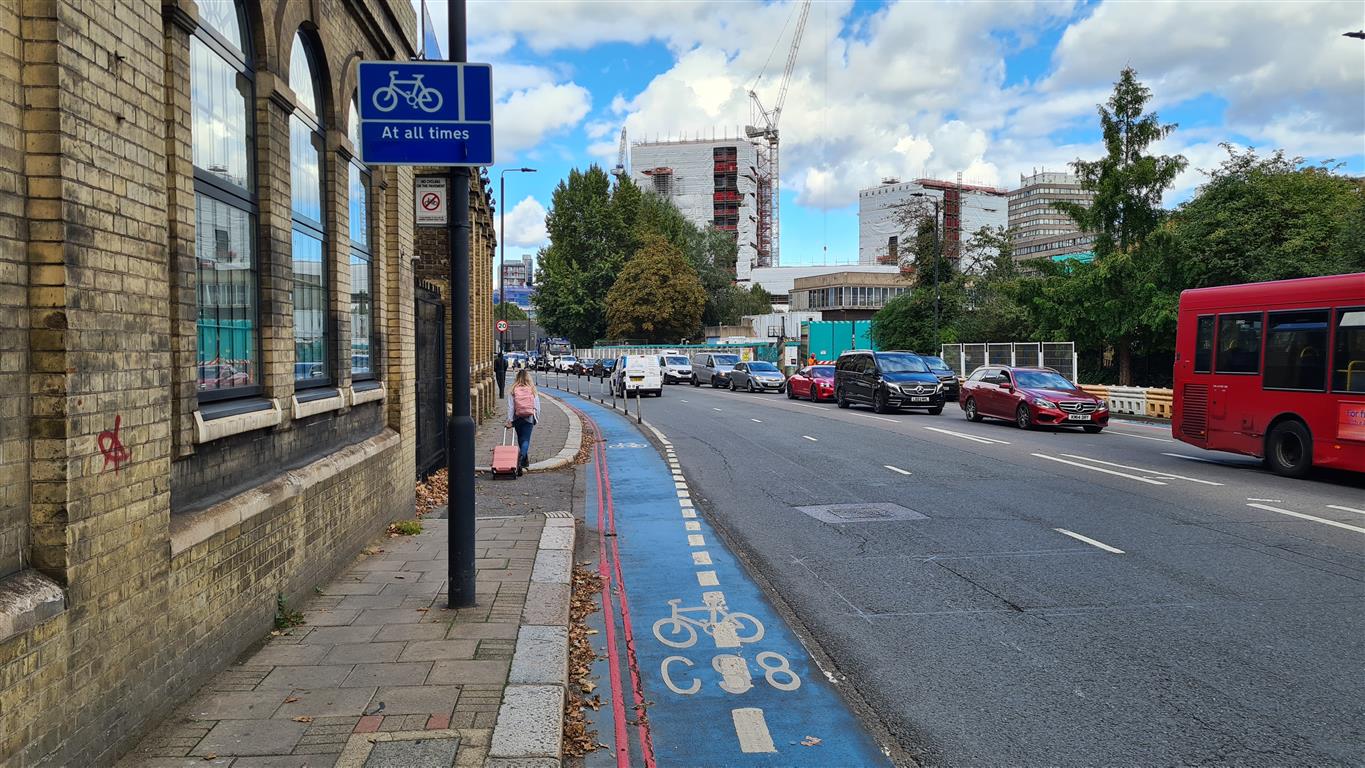
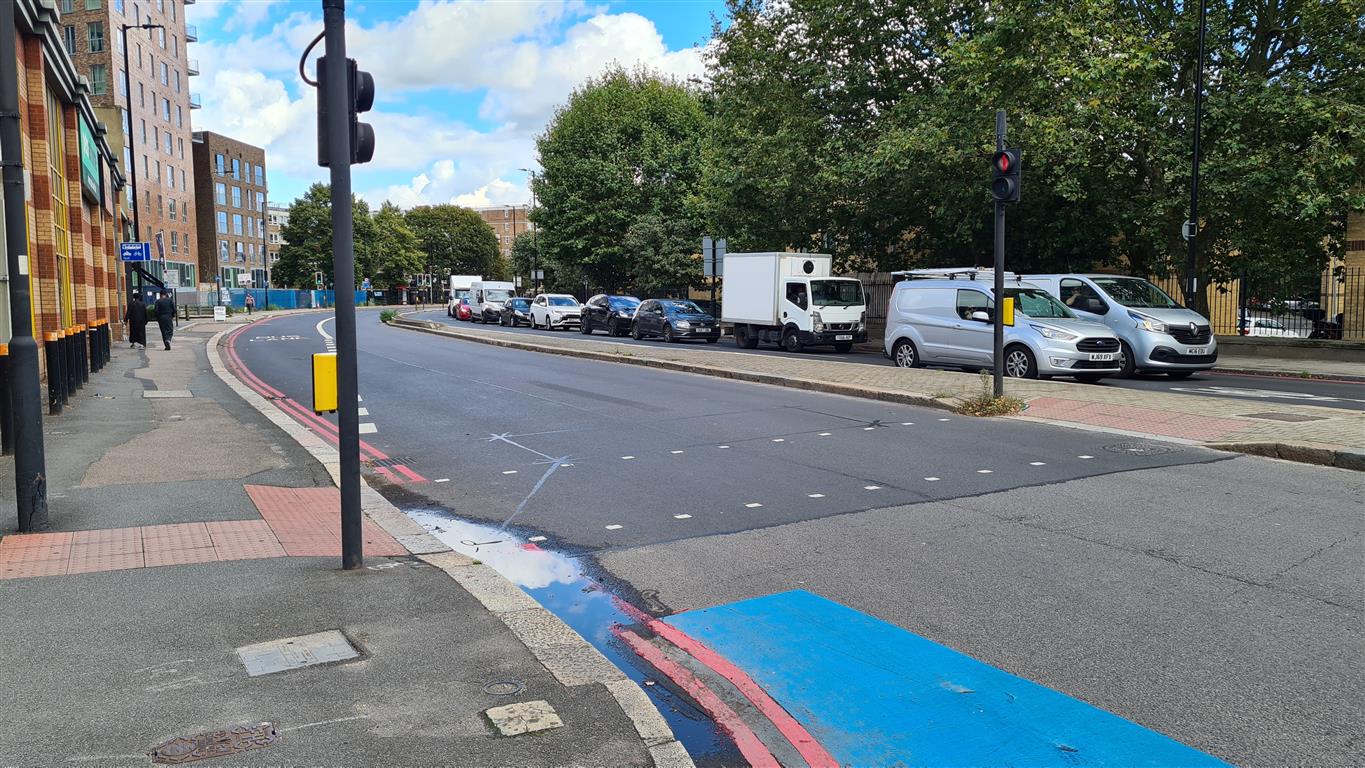
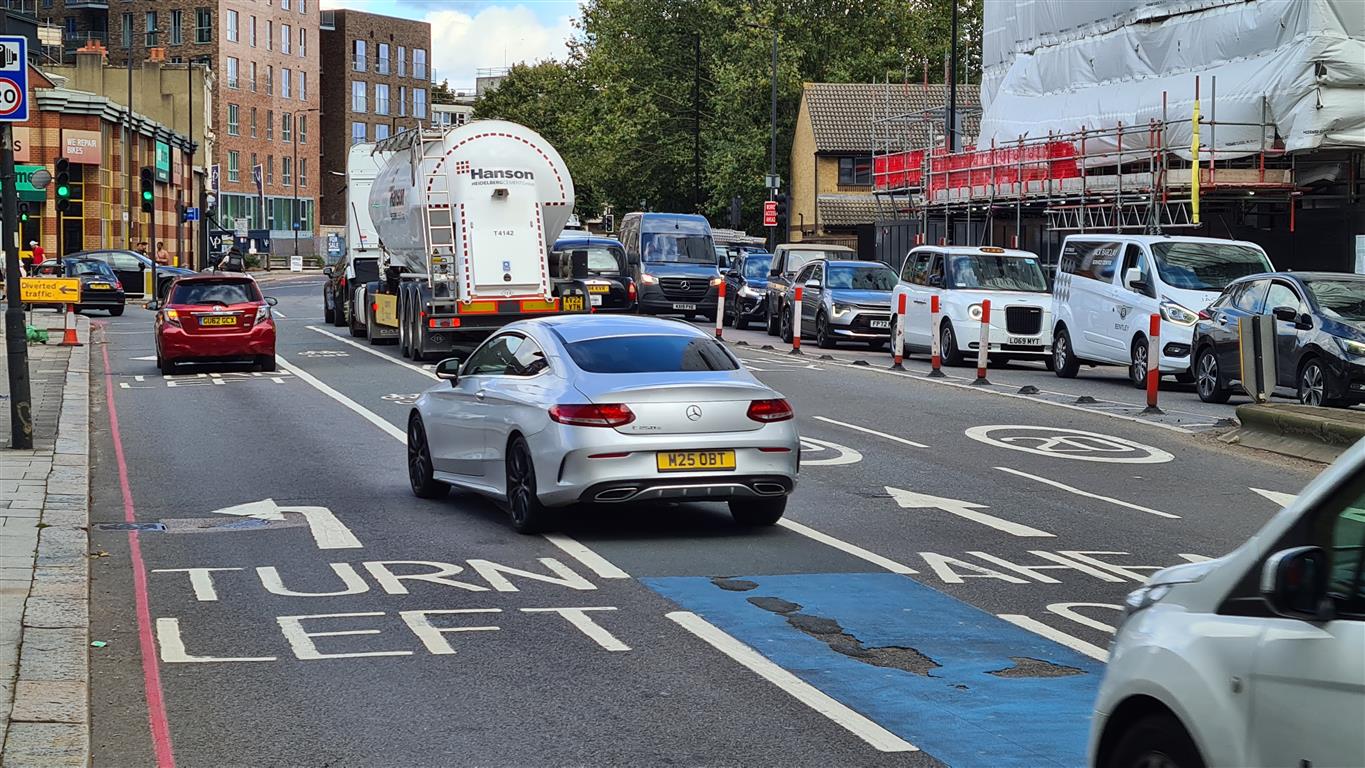
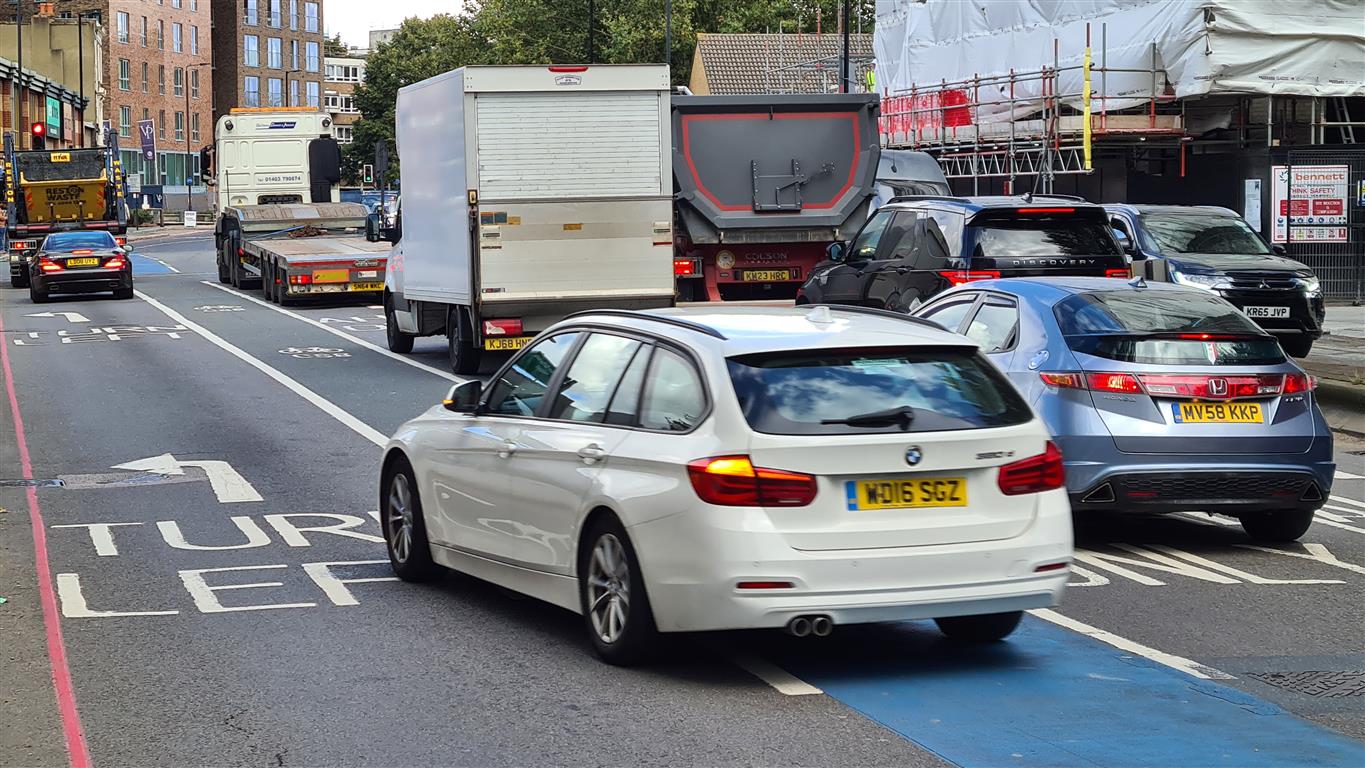
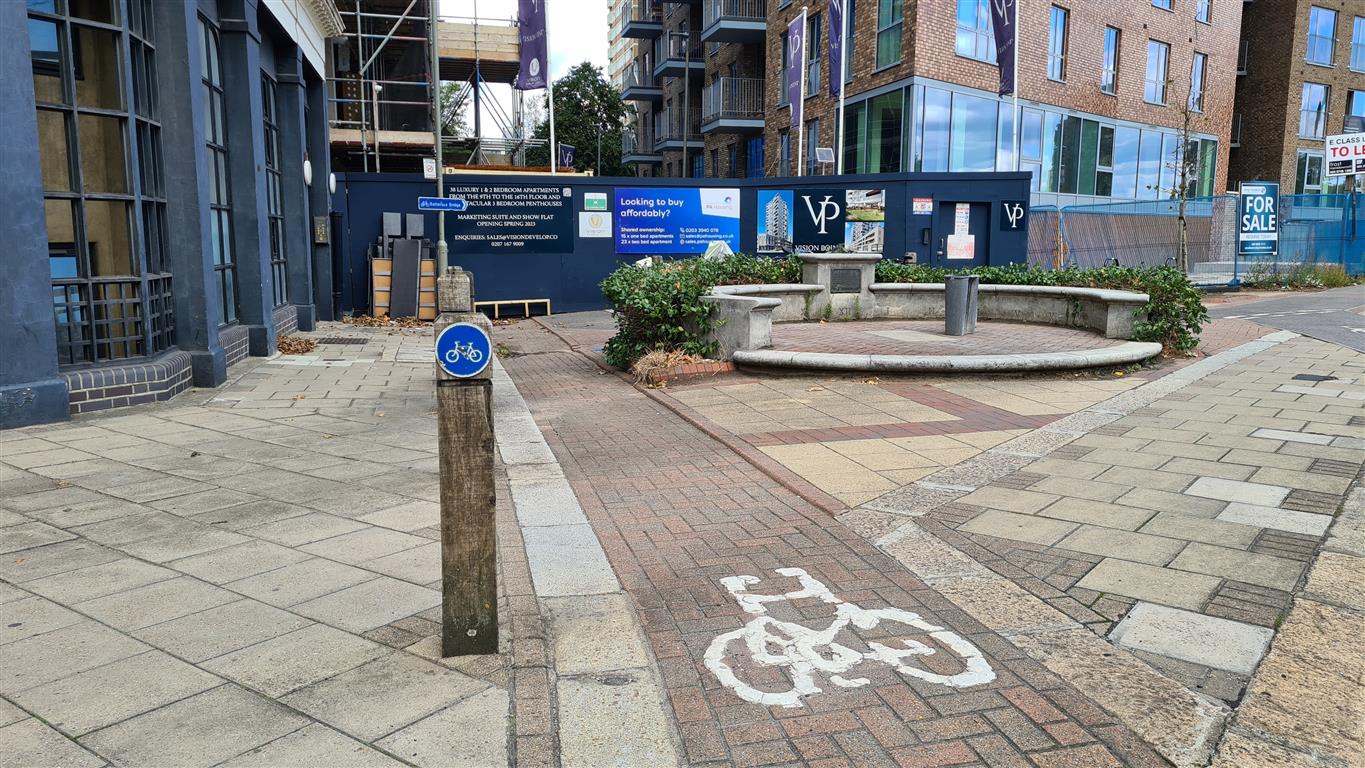
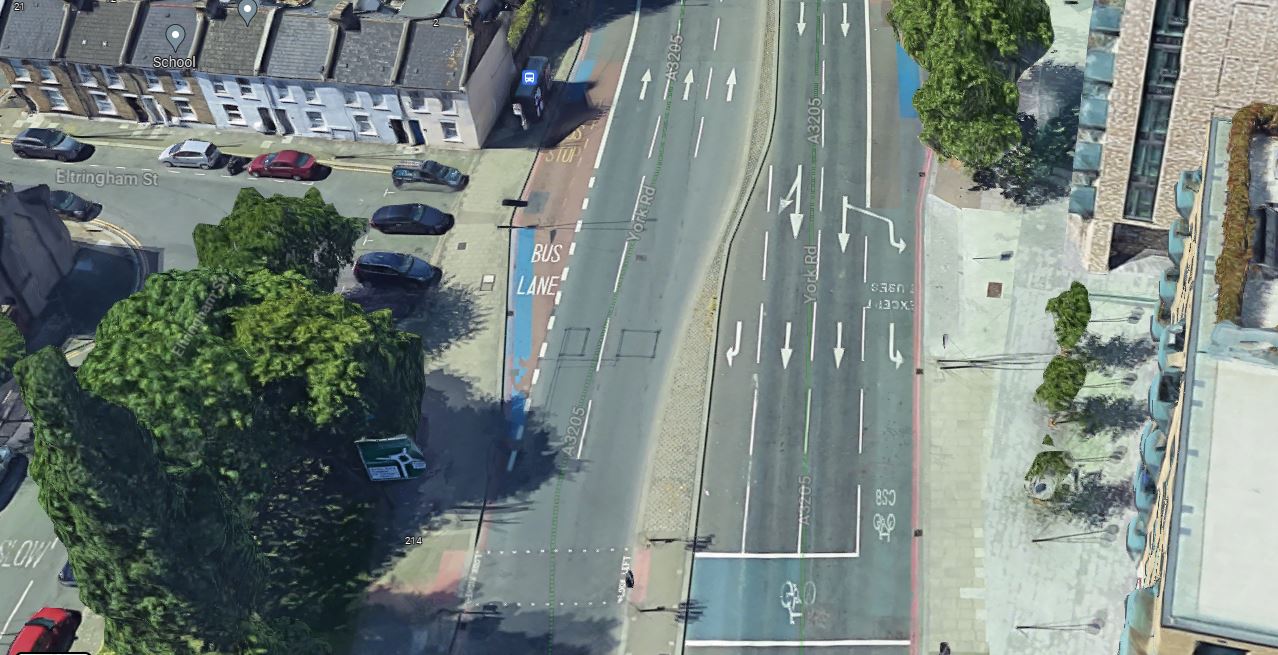
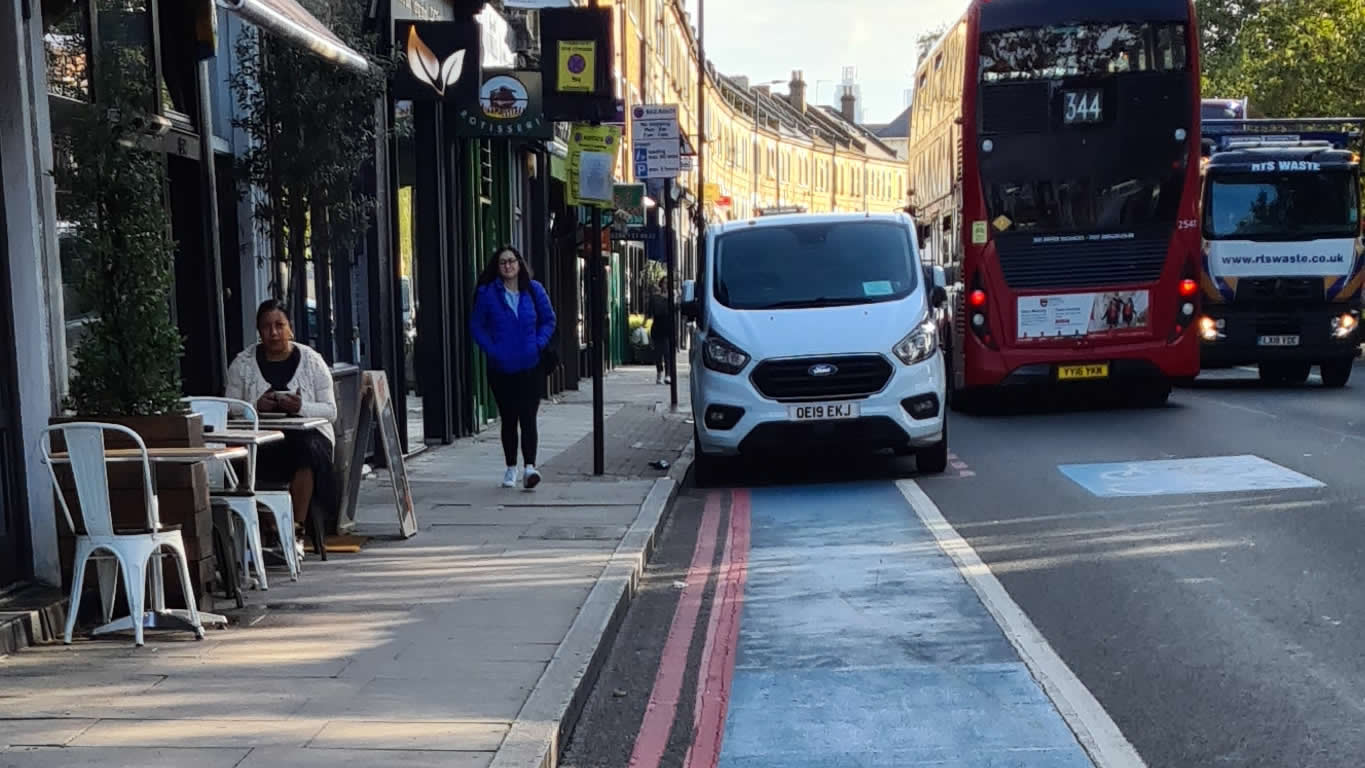
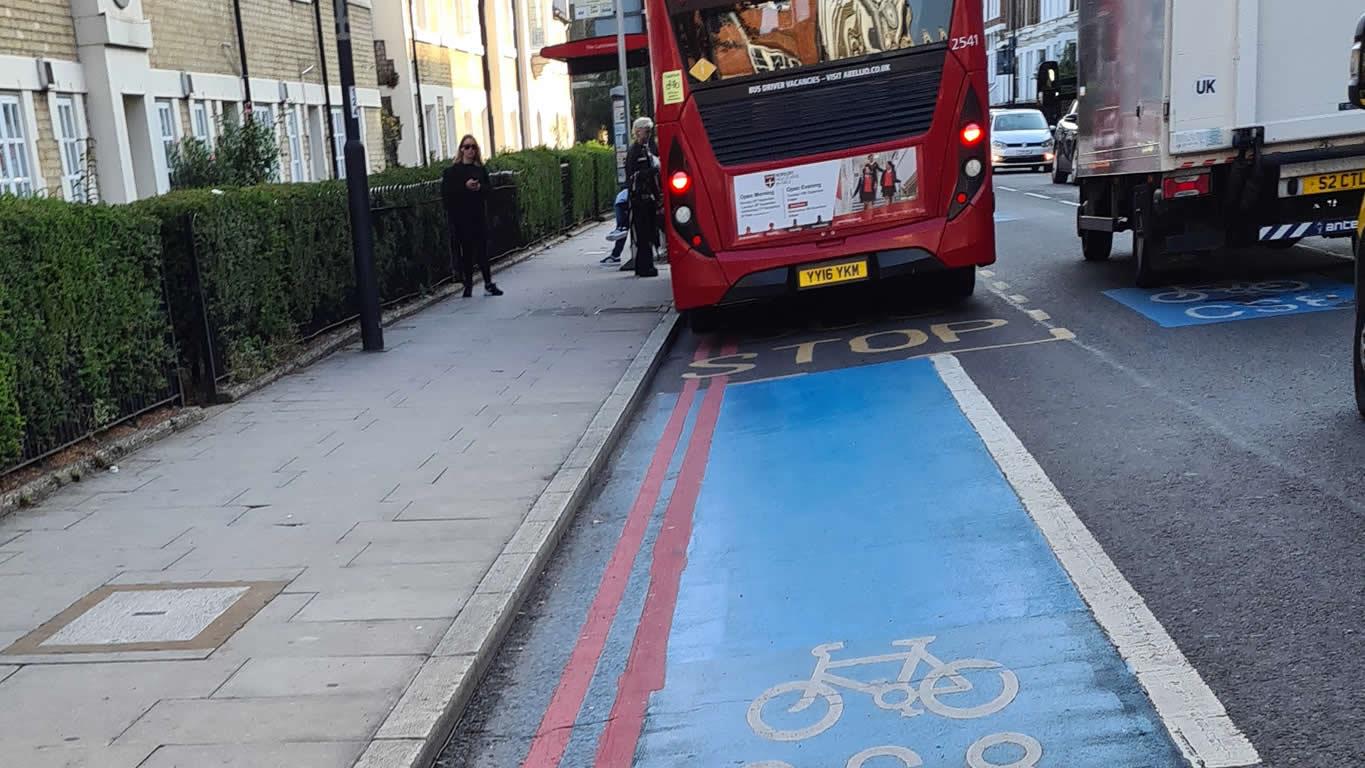
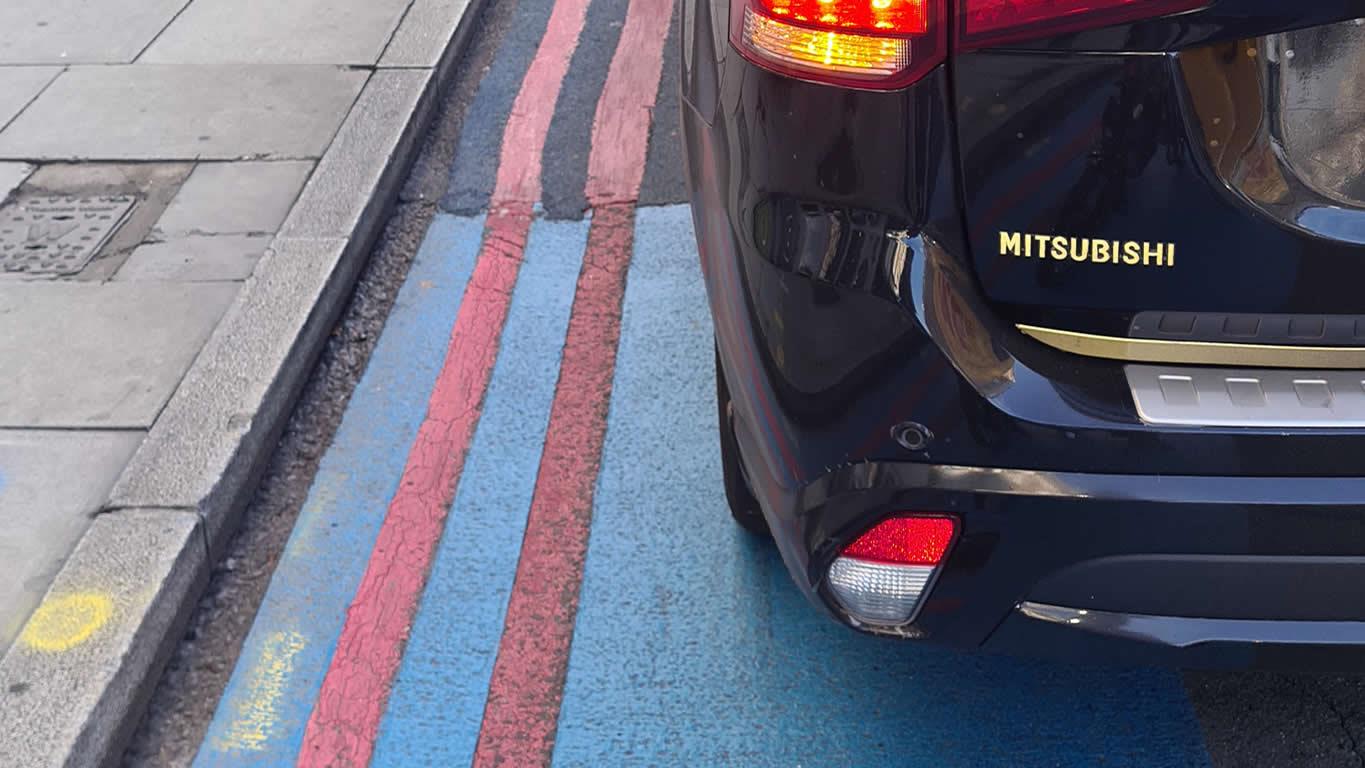
Wandsworth Council claims that CS8 is the responsibility of TfL as it is a red route (same for and CS7). TfL did consult on plans for improving Battersea Park Road in early 2022 to improve CS8, but the changes only focus on the parts connecting to Nine Elms, where they concentrate their efforts (where it seems that all the money still goes, despite Labour gaining control of Wandsworth in 2022) and nothing towards Clapham Junction.
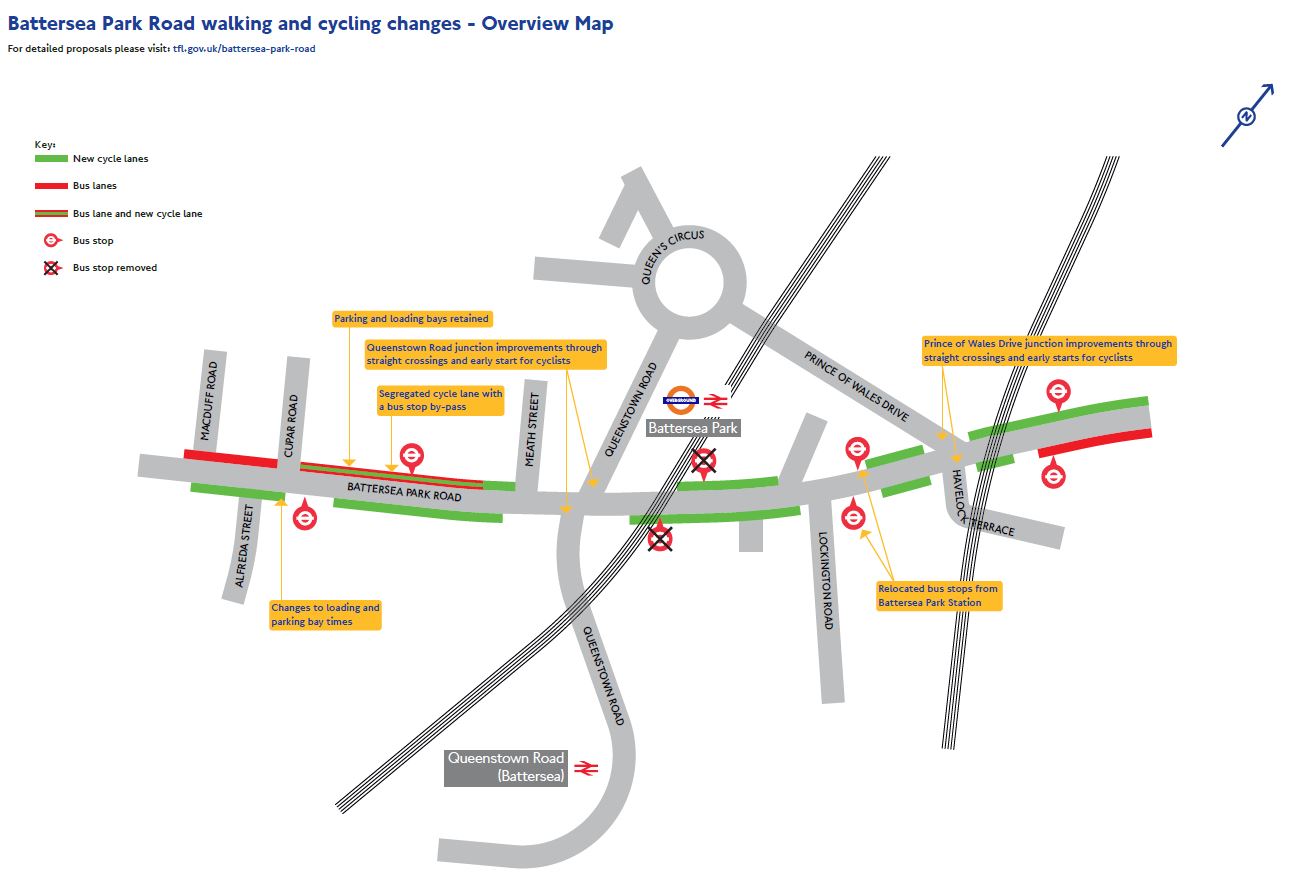
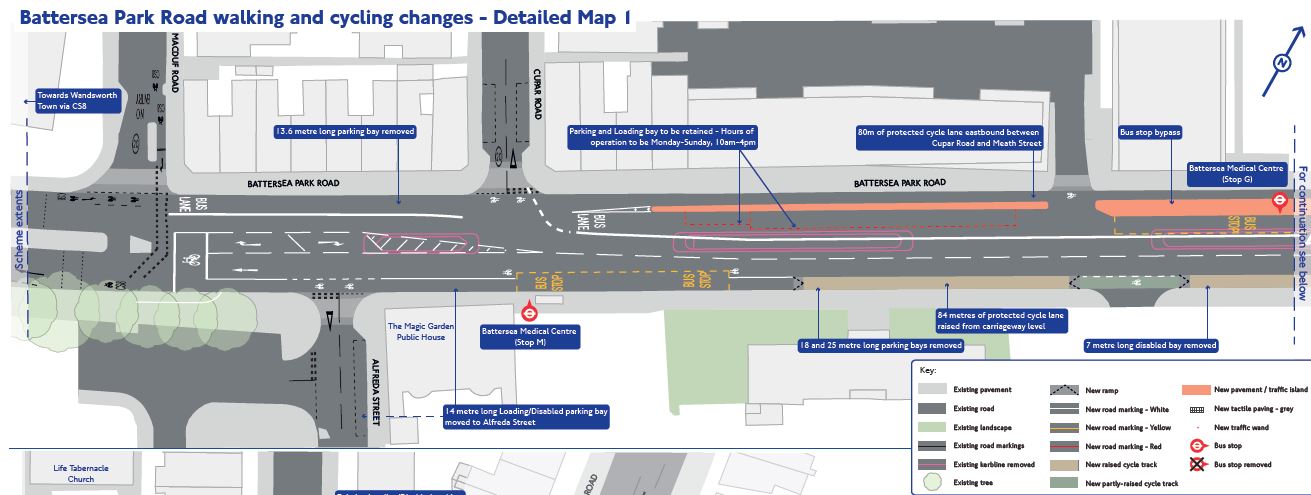
When asked about the part of CS8 heading towards York Road, the Council could not confirm that anything is currently planned. However, the issue with CS8 extends to Wandsworth Roundabout and the discussions that the Council is having with TfL regarding the funding of a full redesign of Wandsworth town centre gyratory system. If executed effectively, it could offer significant potential to connect Southfields and Garratt Lane with York Road, Battersea Park Road, and Nine Elms up to Waterloo and Westminster bridge, with a proper cycle infrastructure featuring segregated paths. Unfortunately, discussions have already been ongoing for a decade, and nothing seems close to a conclusion.
All the other roads are managed by Wandsworth Council, which is responsible for their maintenance and improvement. For example, while Elspeth Road and Latchmere Road are under TfL’s responsibility, Lavender Hill is managed by Wandsworth Council.
When we spoke to TfL in 2021, they confirmed that, while the speed limit and left-turn ban may fall under their jurisdiction at this junction, they offer guidance (with a toolkit available for local authorities) and funding and they can help if the Council wants to improve Lavender Hill. For instance, in 2020, Wandsworth received over £1 million to implement 29 schemes, allowing London boroughs to determine which road network improvements to undertake for which they are responsible.
In November 2022, Wandsworth Council published its strategy for walking and cycling in the borough. In the document, they explain that one of the key criteria to consider is the volume of motor traffic, with roads having more than 500 vehicles during the peak hour (approximately a car every 7 seconds!) requiring segregated cycle lanes. However, based on this criterion alone, nearly none of the borough’s roads would necessitate any segregated cycle lanes, and it appears to overlook the inherent danger of sharing the road with cars.
Glyn Goodwin, Mayor’s climate change award winner and Green party activist, is concerned with the car “obesity” driving around in the neighbourhood and said:
“In certain roads I used to cycle, I can’t get passed the cars anymore. I stopped using those roads nowadays”.
Low traffic cycleways, a poor alternative to cycle infrastructure
A strategy called Low Traffic Neighbourhood (LTN) was put into action during the COVID-19 pandemic to reduce motorized through-traffic within residential zones through filtered permeability and traffic calming measures (often using planters to block access to motor vehicles). However, Wandsworth Council decided to stop their trial in September 2020 under the Conservatives administration.
In addition to the Cycle Superhighways, Transport for London (TfL) has introduced a new designation called Cycle Quietway, or Q roads. Ironically, TfL explains:
“Quietways are continuous, well-signed routes on less-busy streets across London. They complement fully segregated cycle routes that TfL are also building on main roads across the city.”
According to Sadiq Khan, the Mayor of London, Quietway cycle routes enable cyclists to travel through safer, less busy streets across the capital. TfL claims that the Labour Mayor has already delivered 140km of new cycling infrastructure, including 100km of new Quietway routes.
However, as you can see below, they seem to be “infrastructures” only in the imagination of the Mayor and many cyclist wouldn’t consider them as “safer, less busy streets“.
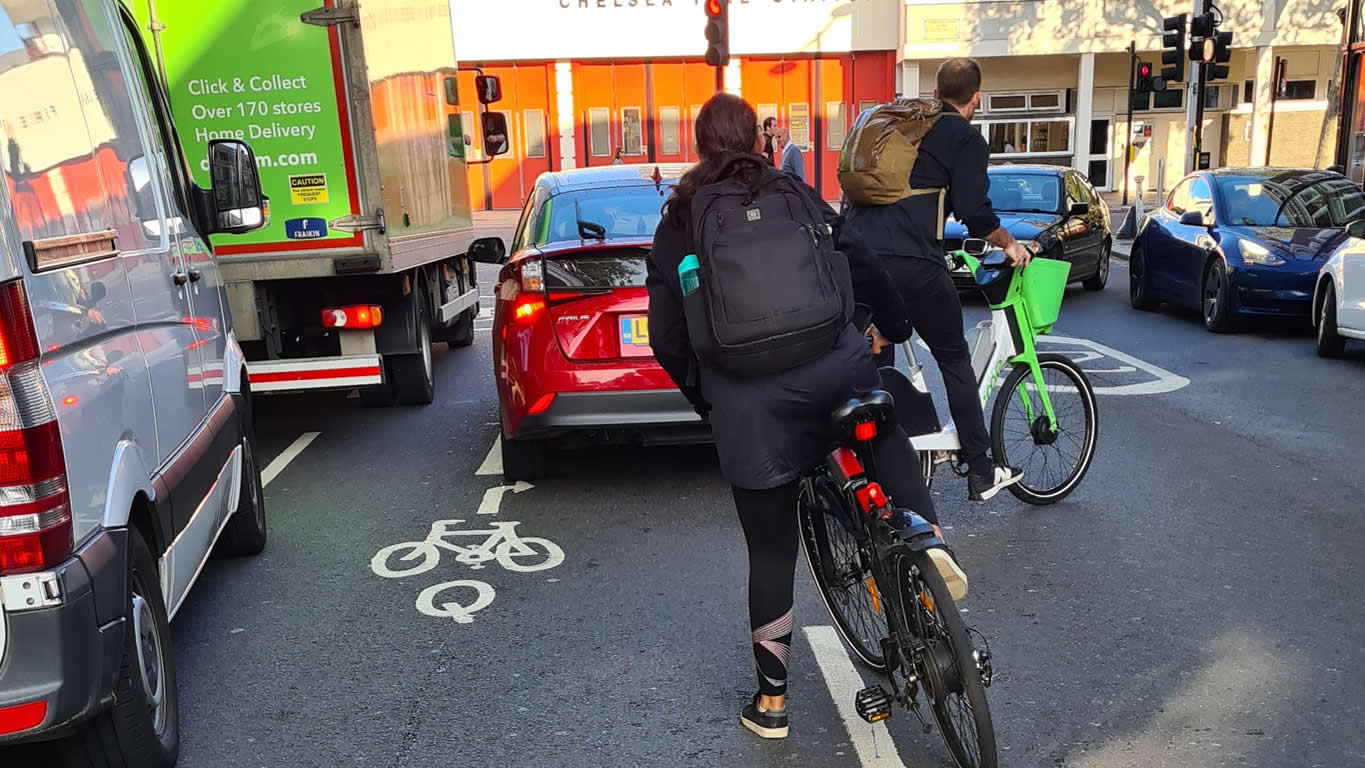
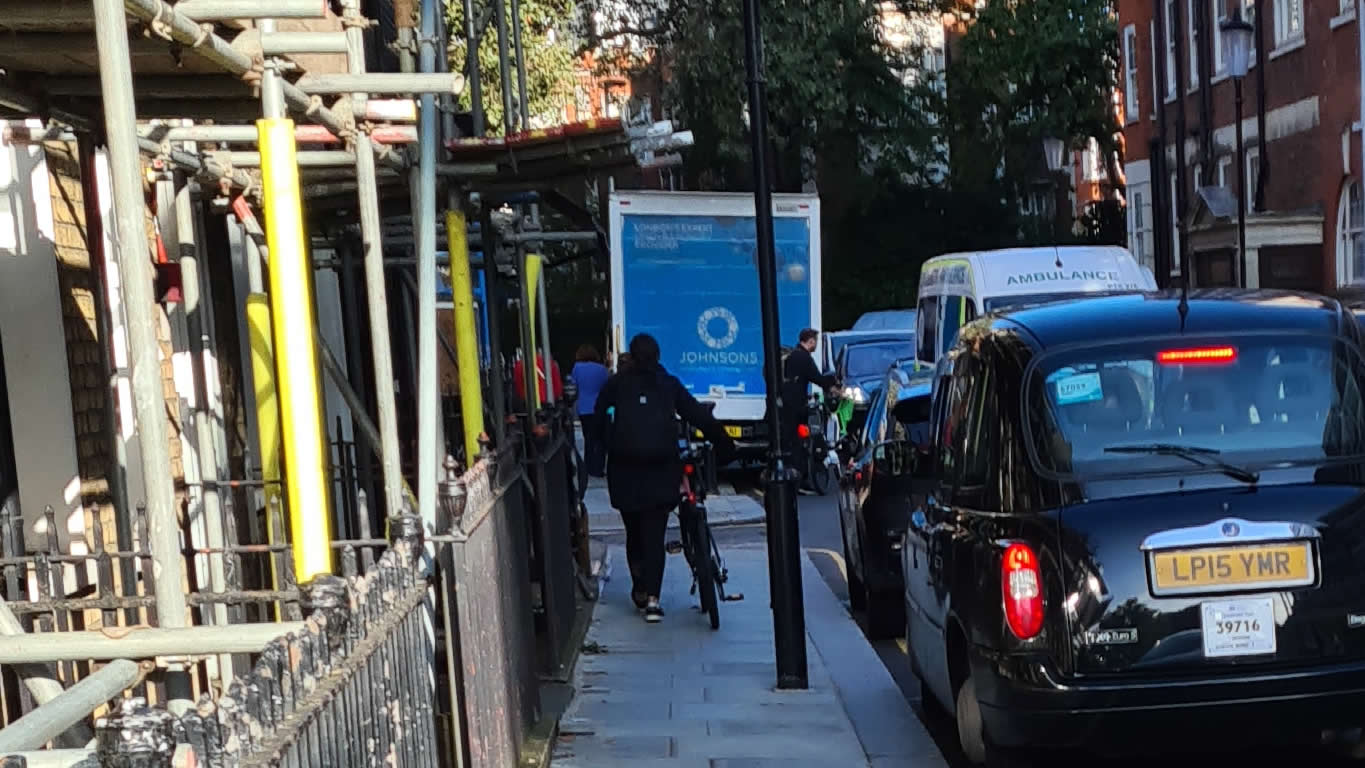
However, while TfL seems to have abandoned the Cycle Quietway designation and instead developed new quality criteria for signed cycle routes called ‘Cycleways,’ replacing the existing Cycle Superhighways and Quietways, Wandsworth Council appears to still heavily rely on the use of just a touch of white paint and symbols.
As a priority, they have decided to develop a new network of ‘quiet’ cycle routes that they expect to consult on in early next year, which will be a series of routes covering much of the borough away from busy roads, but no specific cycle infrastructure plan.
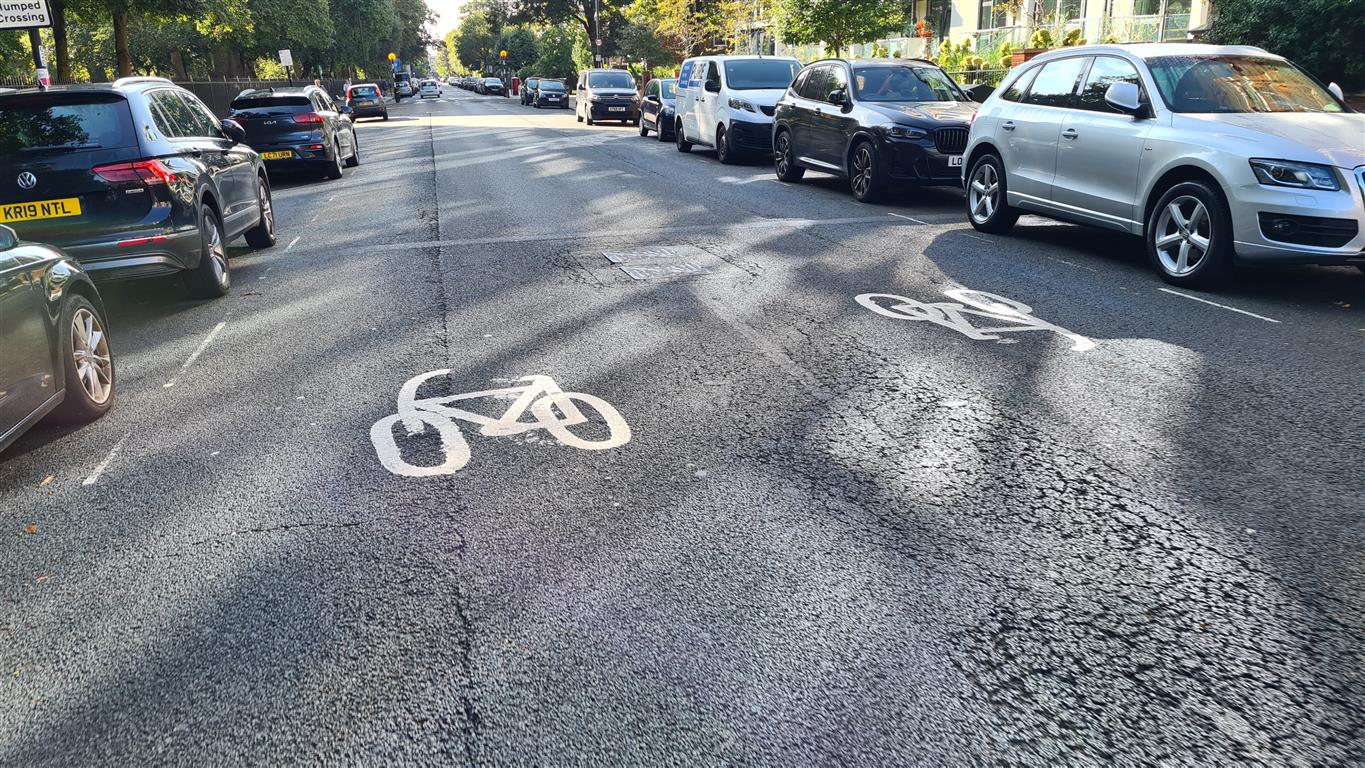
But there is no indication whatsoever on Flacon road, leading to the heart of Clapham Junction.
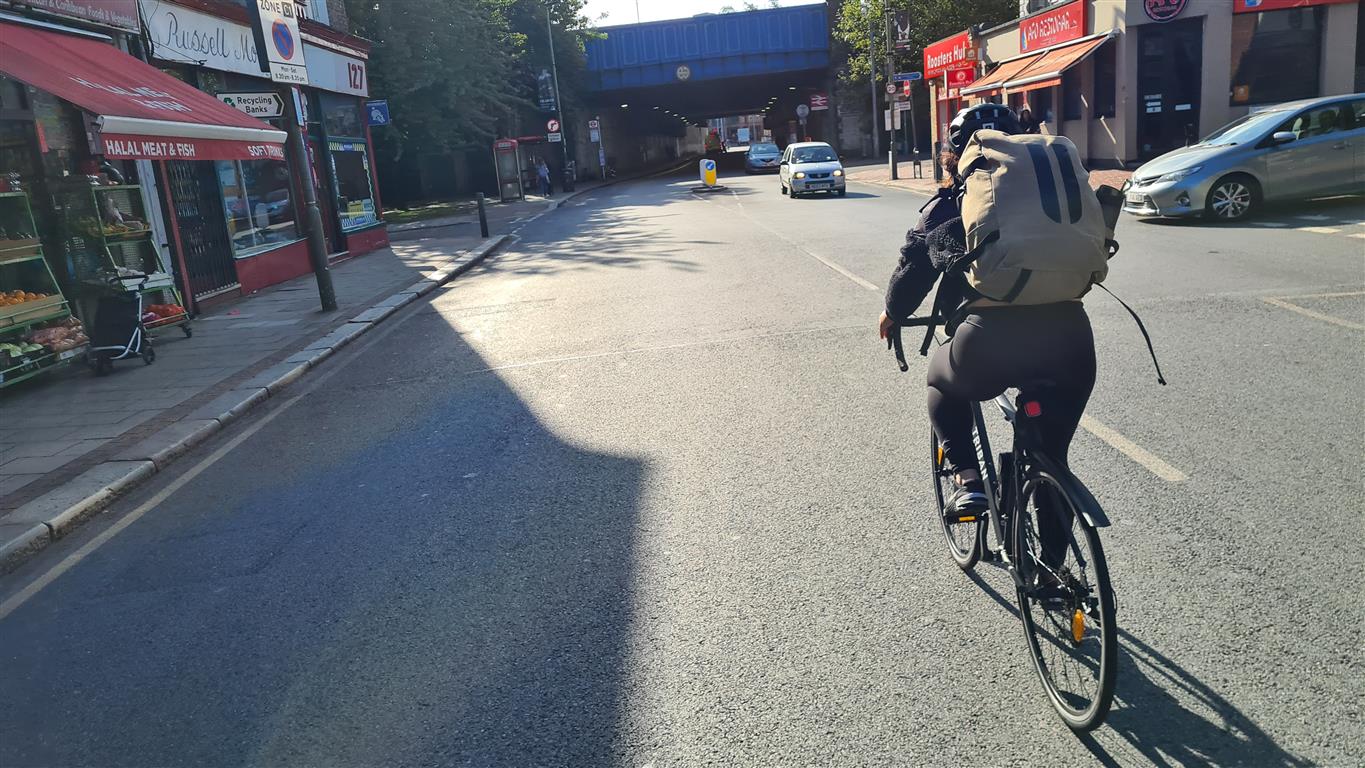
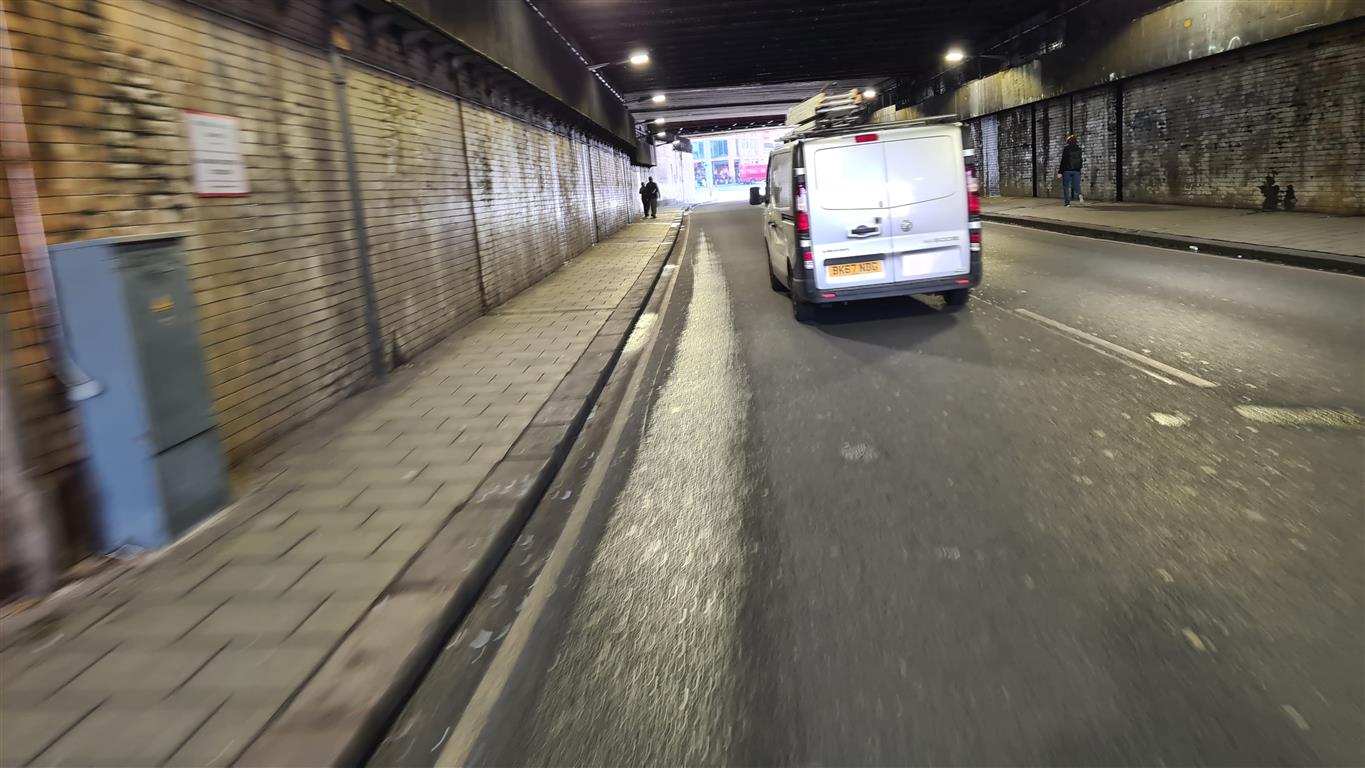
Wandsworth Council has recently completed a study to better understand the impact of heavily trafficked roads and other barriers on the cycling network. The study identified a number of areas where connectivity to adjoining neighbourhoods was poor and provided a range of suggestions for how best to improve connections and create a number of safe cycle routes.
This is exactly the point made by Andrew MacMillan, chair of Wandsworth Living Streets, who pointed out one of the main issue in Wandsworth:
“Across Wandsworth, there are a lot of low traffic zones which are good for walking, going to school and cycling. unfortunately not much is spent on anything else and cycling locations are not tight together”
The Council also acknowledged that the study only analysed connectivity between areas, not how easy it is to cycle within each neighbourhood. The lack of dedicated cycle lanes, segregated paths and proper infrastructure means that most of the time cyclist will have to navigate through traffic due to the cycle lane being used for parking or to the absence of it.
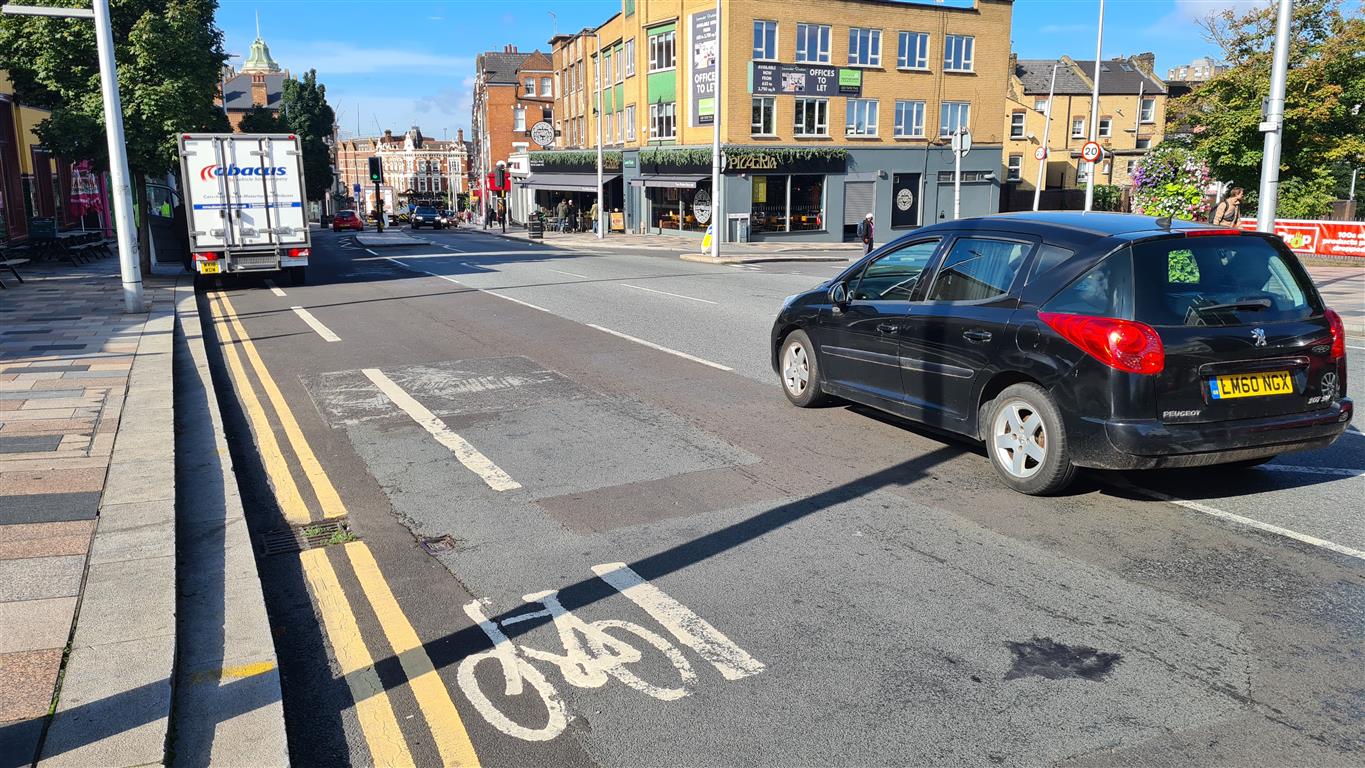
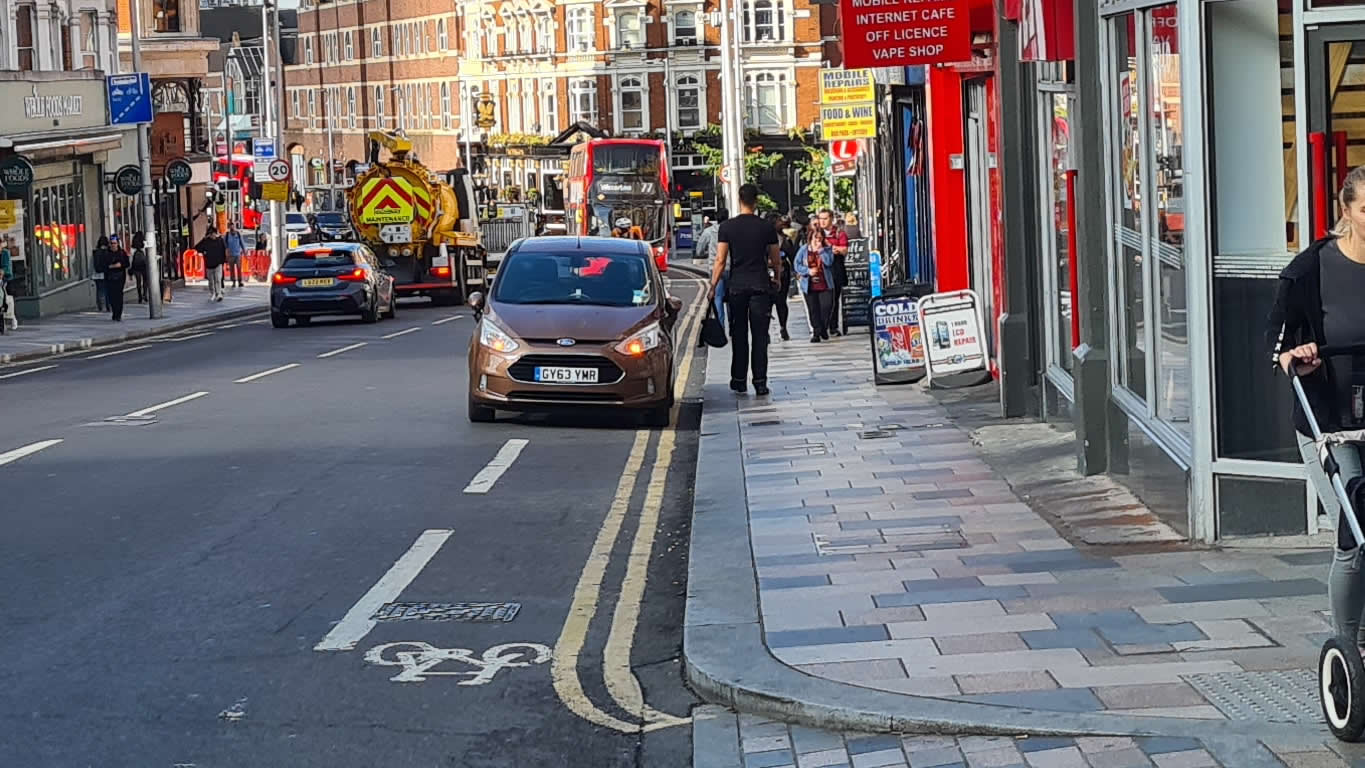
Making change only after a cyclist was killed?
Lucia Ciccioli was cycling to work during the morning rush hour (around 8 am) when she was killed on 24 October 2016 by a lorry. The inquest in January 2018 was told that both were heading west on Lavender Hill, towards Clapham Junction station (source Evening Standard).
According to the coroner’s report, she “travelled over a dip in the road where it appeared as if a pothole had not been repaired which caused her to lose her balance and fall and collide” in front of an articulated lorry, which did not see her and eventually stopped 200 meters further on, in front of Asda.
The coroner warned that more people will die without urgent repairs at the junction, as he highlighted a catalogue of concerns with the junction’s layout:
- The cycle lane leading up to the lights was inadequate.
- There is insufficient protection generally for cyclists riding towards the junction, particularly those who want to go straight ahead or turn right, especially as there is a yellow box junction positioned in the middle of the junction – in which they could not legally stop.
- Another cause for concern was a pothole in the road on Lavender Hill which was hazardous and required urgent repair.
The 32-year-old waitress was the 7th person to die while cycling in London in 2016, the sixth in a road collision, and the second involving a HGV. In comparison, five people died on bikes in 2019, down from 12 in 2018, but then 10 died in 2021, and 7 more cyclists were killed in London in 2022.
Following the report, TfL agreed to carry out road work at the crossroads of Lavender Hill and Elspeth Road to make the junction safer. Temporary wands were put in place in 2020, and segregated lanes were eventually erected after COVID in 2021.
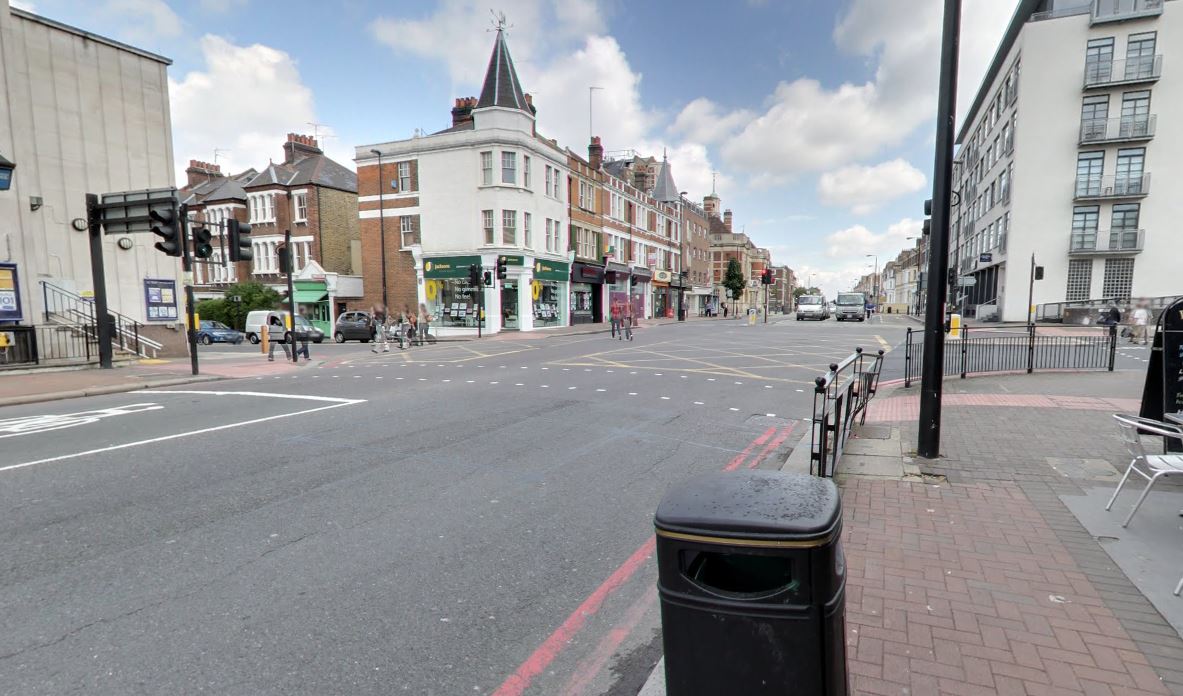
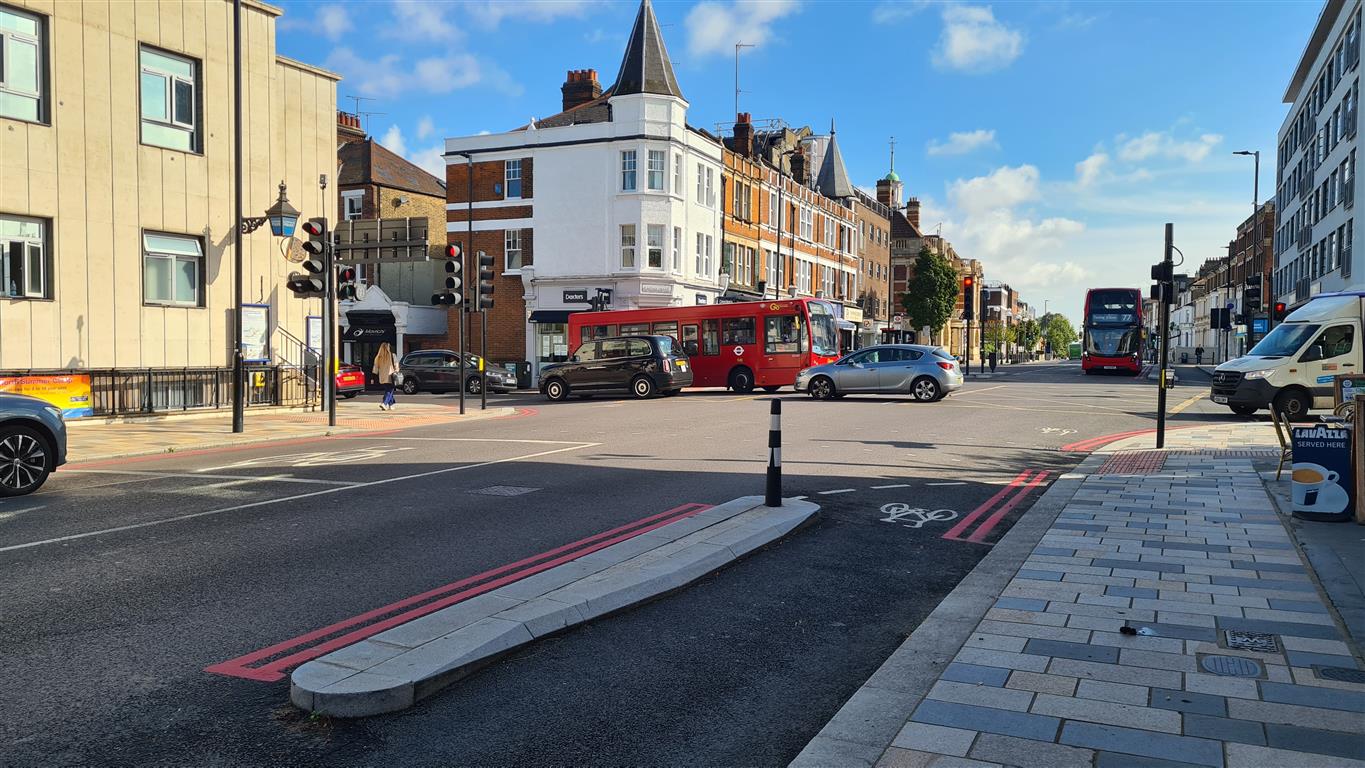
- Read our previous article: Major improvement at dangerous junction on Lavender Hill
Very recently, a 27-year-old cyclist died in a collision with a lorry on Battersea Bridge, before 8 am on Thursday 10 August 2023.
London Cycling Campaign (LCC) head of campaigns Simon Munk told the Evening Standard:
“We’re bitterly disappointed with the lack of progress on the scheme. We’re also bitterly disappointed with how weak the scheme is on the southern approach to the bridge. We need to make sure that fast moving vehicles aren’t mixing with people cycling wherever possible. This bridge has got enough of a collision history and particularly the northern side…that the scheme that was proposed here should have been done years ago.”
In January 2021, marketing manager Jack Ryan was hit and killed by a Range Rover driver on this same bridge.
“So not only has TfL sat on a vital safety scheme for years here, but it also has proposed a scheme that simply isn’t good enough – even by its own standards. The scheme also fails abysmally to do much of anything on the south side of the bridge in Wandsworth for cycle safety, or anywhere apart from the junction on the north side.”
Between November and January 2023, TfL held a public consultation on proposals to make safety improvements to the Battersea Bridge area.
In June TfL announced plans to install new pedestrian crossings, bus lanes, cycle signals and a section of protected cycle track, with work to begin in winter this year. Unfortunately it will be too late for this 27-year-old cyclist and in any case would not have been enough to prevent the accident.
In the consultation report, TfL said that “due to the physical constraints of this listed structure, it is not possible to provide cycle lanes on Battersea Bridge”.
However, alternative solutions exist but are not yet considered by TfL. A Highway engineer said on X (formerly Twitter) that Albert Bridge could easily be fitted with cycle tracks.
FWIW, Battersea Bridge cannot be maintained with 2-way traffic and protected cycle tracks added. It seems to me that strategically and quickly, Albert bridge (which has a 3 tonne weight limit) should have widened footways and a 2-way cycle track and no other motor traffic.
— The Ranty Highwayman (@RantyHighwayman) August 10, 2023
The London Cycling Campaign said:
“There are of course other options: make Albert and Battersea opposing one-ways and use the space for wider pavements and cycle tracks; cantilever off the existing bridge to widen pavement and provide cycle track; a ‘bus gate’ that enables buses and cycling across one bridge only. And that’s just off the top of our heads.”
Once again there will be an investigation that will take a few years and eventually some improvements will be decided. But, once again, it appears that there is little (and slow) proactive action, only reaction to a fatality.
The website bikedata shows all collisions involving a cyclist (but also pedestrians and car occupants, depending on the chosen options).
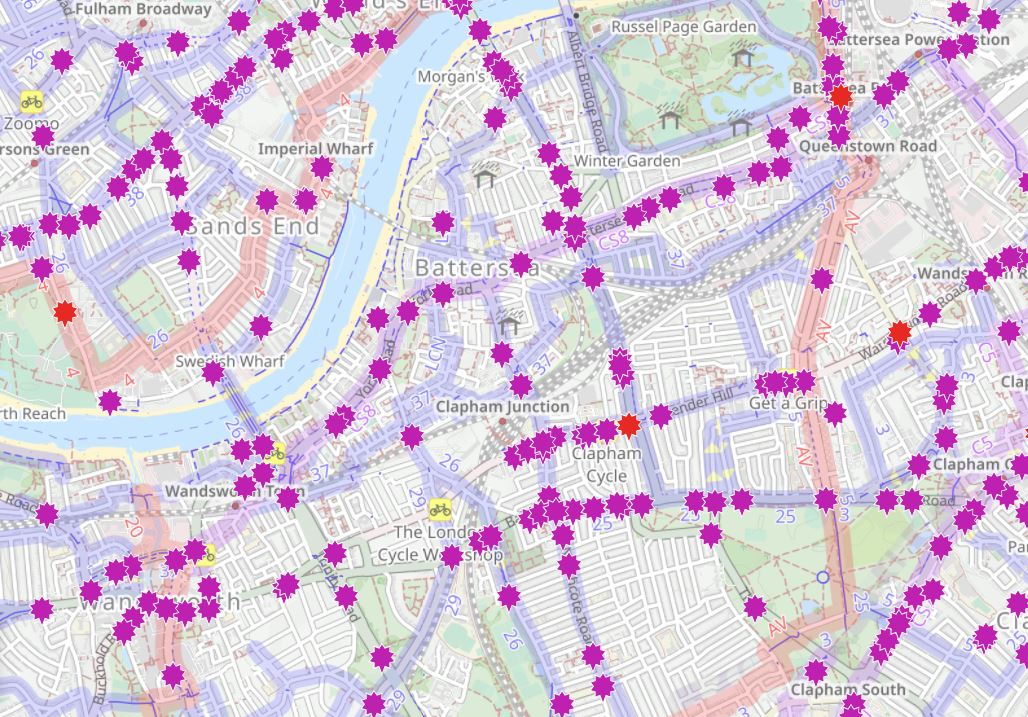
This week (Thursday 28 September 2023), the Department for Transport has released the latest data regarding the road casualties, including the number of cyclist killed or seriously injured by local authorities in Great Britain (download data HERE). While these figures must be put into perspective with the number of people cycling, nevertheless, Wandsworth is amongst the top ten most dangerous areas for cyclists, ranking #2 (a position shared with Lambeth) after Westminster, among London boroughs.
| Local Authorities in Great Britain with the highest number of people killed or seriously injured (KSI) while cycling in 2022 | ||
| Rank | Local Authority | KSIs |
| 1 | Surrey | 139 |
| 2 | Hampshire | 136 |
| 3 | Lancashire | 98 |
| 4 | Westminster (London) | 93 |
| 5 | Leeds | 78 |
| 5 | Oxfordshire | 78 |
| 7 | Lambeth (London) | 77 |
| 7 | Wandsworth (London) | 77 |
| 9 | West Sussex | 68 |
| 10 | Cambridgeshire | 66 |
Wandsworth Council stated that they frequently meet with TfL to discuss improvements and the delivery of cycle projects in the shorter term, as well as explore options for future development.
However, they were unable to pinpoint any specific changes, except for the forthcoming projects for Nine Elms/Battersea Park Road (as previously outlined) and Garratt Lane and Burntwood Lane, which are scheduled for discussion in the Transport Committee this November.
Is parking bikes the main vision in Wandsworth Council
The Council has presented a project called “School Streets”, which aims at transforming roads outside of schools into pedestrian and cycle zones at drop off and pick up time providing a low-traffic route around school gates.
However, when you compare with a similar plan that they are currently implementing in Paris, you clearly see a difference in ambition. In Paris they are implementing a plan called “rue aux écoles” (school streets) which involves pedestrianizing the roads around nursery and primary schools with removable barriers installed where possible, creation of pedestrian areas with light-colored paving and extensive green spaces with tree planting. There are 180 streets concerned by the plan.
Andrew deplores the lack of ambition of Wandsworth Council:
“In many other boroughs, the cycling approach is much more aggressive. The City of London is amazing. See also Merton, Islington, for instance. And Lambeth is spending a lot, including a kerbside strategy.”
The Council has also several projects that support cycling but are not cycle routes, with the main one being focused on cycle parking. They are introducing secure bikehangars for residents across the borough, which are generally located on the street (residents can request that a bikehangar be considered for their street via the council website. Each hangar is accessed by a key allocated to registered members and can accommodate up to six standard cycles.
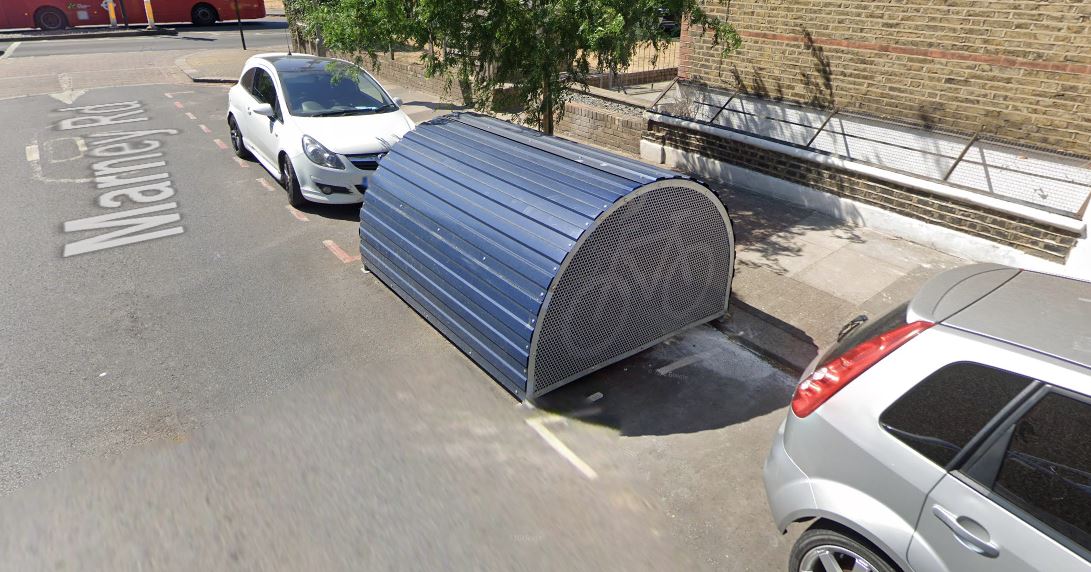
As of August 2022, on-street bikehangar spaces are priced at £72 per year per bike, and those on council-owned estates are provided free of charge to estate residents. However, the focus should be on promoting cycling rather than cars, as emphasised by Glyn:
“Cars just keep getting bigger because manufacturers can charge more. So time to turn that around. Otherwise there will be no road left. If you think of car storage per annum, it works out at what, 70p a day? You will be charged £173 for a Tesla, while 6 bikes parked in a cycle hangar which takes up less space will costs £72 each, £432 in total”.
But parking is probably the most successful policy currently in the borough. They are constantly installing more bikehangars and more cycle parking stands and they have introduced a new policy that allows cargo bikes to park for free in the street the same way as motorbikes.
Is the cycling policy focusing more on parking than on going currently? In their Strategy document, the Council said:
“Our vision is to transform Wandsworth’s streets to enable a Year 6 child to be able to walk or cycle to their local school without encountering any road danger.”
There is still a considerable journey ahead, and it appears that Wandsworth Council will need to do more than merely apply paint to some roads, provide cycle parking, and introduce new signage to truly become a cycle-friendly borough and enable many 11-year-olds to safely cycle to school in areas like Clapham Junction and its surroundings.
Update 03/10/2023: Added Twitter video showing why paint is not safe.




